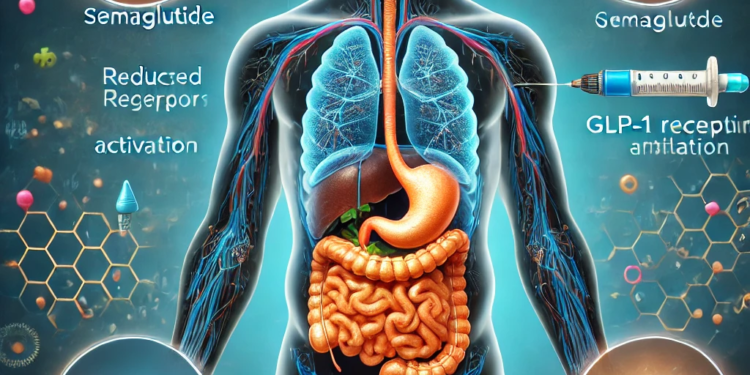Introduction
The widespread use of GLP-1 receptor agonists such as semaglutide has transformed weight management and type 2 diabetes treatment. These medications have been pivotal in helping individuals achieve significant weight loss by altering appetite regulation slowing gastric emptying and enhancing insulin sensitivity.
However discontinuation of these medications remains a major concern as research indicates that weight regain is common when GLP-1 therapy is stopped. For many patients the challenge lies not only in successfully tapering off the medication but also in maintaining their weight loss achievements over the long term.
This article provides a structured approach to transitioning off GLP-1 injections while minimizing the risk of weight regain. We will explore the different forms of semaglutide available discuss tapering strategies and examine how lifestyle interventions can play a crucial role in sustaining long-term results.
Understanding Semaglutide and Its Forms
Semaglutide functions by mimicking the effects of glucagon-like peptide-1 (GLP-1) a naturally occurring hormone that regulates appetite and glucose metabolism. The drug is available in multiple formulations each with unique absorption characteristics and dosing schedules.
- Injectable Semaglutide (Ozempic Wegovy):
-
- Administered once weekly via subcutaneous injection.
- Provides a prolonged duration of action making it easier for adherence.
- Commonly used for both weight loss and diabetes management.
- Oral Semaglutide (Rybelsus):
-
- Taken daily making it a viable alternative for individuals who prefer oral medications.
- Requires strict administration guidelines such as taking on an empty stomach with water and waiting at least 30 minutes before consuming food.
- Absorption is variable and depends on gastric conditions.
Each form has advantages and limitations and their role in tapering strategies will depend on individual patient factors.
The Challenge of Discontinuation and Weight Regain
One of the primary concerns with stopping semaglutide therapy is the high probability of weight regain. Studies suggest that the biological adaptations induced by semaglutide—such as appetite suppression—begin to reverse once the medication is discontinued.
A 2022 study published in Diabetes Obesity and Metabolism found that individuals who discontinued once-weekly semaglutide 2.4 mg regained approximately 66% of their lost weight within a year (PMC9542252).
A separate trial conducted by the New England Journal of Medicine further confirmed these findings showing that participants who stopped GLP-1 therapy experienced a rapid return of appetite and increased caloric intake leading to significant weight rebound. This indicates that the metabolic benefits provided by GLP-1 agonists are temporary and require ongoing support to maintain.
Strategies for Tapering Off GLP-1 Injections
A structured gradual approach to tapering is essential to mitigate the effects of withdrawal and weight regain. Abruptly stopping semaglutide can result in increased hunger a sudden shift in metabolism and psychological distress making it harder to sustain weight loss.
Step-by-Step Tapering Strategy
- Gradual Dose Reduction
-
- Reduce the weekly injectable dose by 25% every 3-4 weeks to allow the body to adjust.
- For example if a patient is on 1 mg of semaglutide they may decrease to 0.75 mg for a month then to 0.5 mg and so on.
- Switching to Oral Semaglutide
-
- As injectable doses decrease oral semaglutide can be introduced to help maintain appetite suppression.
- A study by the American Journal of Clinical Nutrition found that patients transitioning from injections to oral therapy had better adherence to lifestyle modifications (AJCN).
- Monitoring for Withdrawal Symptoms
-
- Some patients experience increased hunger cravings and weight fluctuations as they taper off.
- Healthcare providers should monitor metabolic markers such as blood sugar levels and fasting insulin.
- Incorporating Appetite-Regulating Nutrients
-
- Protein-rich diets and fiber supplementation (such as psyllium husk) can aid in satiety during the transition phase.
Transitioning Between Semaglutide Forms
Switching between semaglutide formulations can help bridge the gap when discontinuing GLP-1 injections. A structured transition plan might look like this:
- Weeks 1-4: Reduce weekly injection dose while introducing oral semaglutide at 3 mg daily.
- Weeks 5-8: Discontinue injectables and maintain oral semaglutide at 7 mg daily.
- Weeks 9-12: Taper oral semaglutide down to 3 mg daily before discontinuing completely.
This phased approach minimizes metabolic shock and allows the body to gradually adapt to the absence of GLP-1 receptor activation.
Implementing Lifestyle Modifications
Sustaining weight loss post-GLP-1 therapy requires robust lifestyle interventions.
1. Dietary Adjustments
- Increase Protein Intake: A study in Obesity Reviews found that a high-protein diet helps mitigate post-treatment hunger and supports lean muscle retention.
- Control Glycemic Load: Avoiding refined carbohydrates and focusing on whole foods can stabilize blood sugar and reduce cravings.
2. Exercise as a Metabolic Regulator
- Strength training helps preserve lean muscle mass which is crucial for maintaining metabolic rate.
- A combination of resistance training and cardiovascular activity is recommended.
3. Behavioral Support
- Cognitive Behavioral Therapy (CBT) has been shown to be effective in helping patients adjust to life post-medication.
- Mindful eating practices can further reinforce long-term weight management.
Monitoring and Professional Guidance
Regular follow-ups with healthcare professionals are essential during the tapering process. Patients should be monitored for:
- Metabolic shifts (fasting glucose HbA1c levels)
- Psychological changes (increased cravings emotional eating patterns)
- Physical activity adherence (tracking step counts resistance training consistency)
Many patients benefit from structured weight maintenance programs that include medical supervision and nutrition coaching.
Conclusion
Tapering off GLP-1 injections such as semaglutide requires a carefully structured approach that integrates gradual medication reduction dietary modifications and behavioral strategies. Transitioning between different semaglutide forms—particularly from injectable to oral—can offer a smoother withdrawal experience and help sustain weight loss.
While GLP-1 receptor agonists have proven to be effective for weight management their long-term success depends on a patient’s ability to integrate sustainable lifestyle changes. By adopting a personalized tapering plan under medical supervision individuals can successfully transition off semaglutide while minimizing the risk of weight regain.
References
- Diabetes Obesity and Metabolism Study on Weight Regain After Semaglutide Discontinuation (PMC9542252)
- New England Journal of Medicine GLP-1 Therapy Withdrawal Effects (NEJM)
- American Journal of Clinical Nutrition Impact of Oral Semaglutide on Weight Maintenance (AJCN)
- Obesity Reviews Role of High-Protein Diets in Preventing Weight Regain (ObesityReviews)















